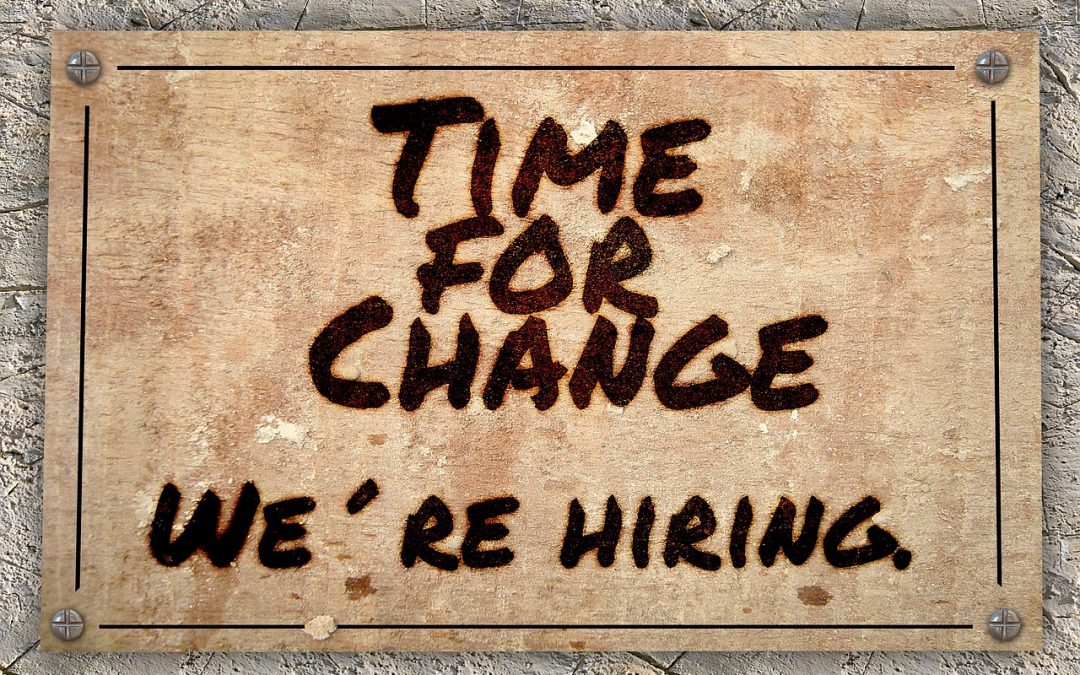
by Employment Screening Alliance | Aug 21, 2016 | Employment Screening
Employment Screening | Can Employers Test for Prescription Drugs? Pt. 1
Employment Screening | Prescription Drug Protections
Additionally, many employees using these medications are protected by the federal Americans with Disabilities Act (ADA), which limits an organization’s ability to question its employees’ use of such drugs unless an employee’s behavior is compromising workplace safety or is otherwise indicative of a reduced ability to perform his or her job. Furthermore, workers can claim the privacy of their health information and not share details of medication use with their employers.
One recent situation can possibly help provide some guidance to employers as they navigate this issue. In 2007, an automotive parts manufacturer was concerned about what it believed to be a higher than normal rate of workplace accidents at one of its factories.
Suspecting that the underlying cause of these accidents was drug use by employees, the company banned the use of several prescription medications and required all its workers in the facility to take a drug test that comprised a panel of 12 substances, five of them illegal and seven of which were commonly abused prescription medications.
The company then took adverse action, including suspension and termination, against several employees who tested positive for these substances, most of whom had legitimate prescriptions for the medications.
The U.S. Equal Employment Opportunity Commission (EEOC) subsequently initiated a lawsuitagainst the company, on the basis that the drug testing violated the employees’ rights under the ADA.
The case resulted in a settlement of $750,000 in favor of the EEOC, which contended that the employer’s actions constituted unlawful medical inquiries and required medical examinations that were not job-related or consistent with business needs. Indeed, the EEOC recommends a very specific set of conditions under which employers can require disclosure by workers of prescription drug use, with impact to public safety being the primary concern.
Potential Exceptions
In some instances, like with employees in safety-sensitive positions or in a post-accident situation, employers may have some latitude to inquire into, or even test for, prescription medications used by the employee.
Indeed, organizations regulated by the FMCSA could potentially be allowed to require theirdrivers to proactively report the use of all prescription medications currently being used pursuant to 49 CFR 382.213, given that many commonly prescribed medications can have powerful effects and could therefore impact driving ability if they are taken during the performance of duties.
Employers, however, should be very judicious and careful in these situations and engage their employment counsel to help guide them as to when this type of inquiry or testing would be appropriate. -Hireright
Learn what ESA can do for you! Call 866-830-3724 to discuss employment screening services or complete the form on www.esascreening.com now! Employment Screening at its finest!

by Employment Screening Alliance | Aug 17, 2016 | Employment Screening
Employment Screening | Allowing Social Media At Work Pt. 2
Employment Screening | 3. Work mobile not just for work
I carry two mobile devices to work like most of my colleagues do. More than 77% of employees have multiple devices and 33% use at least three mobile devices while they’re working. Like in the last rule, people generally feel that there are too many restrictions on company owned devices. A majority of job applicants feel that companies should approve company devices for personal use as well.
4. Let employees choose their own devices
“If you are giving us something that we have to lug around everywhere, might as well let me choose.” Individuals have become expressive over the past few decades and their identity extends to the devices that they carry with them. They want to be allowed to choose for themselves what goes with their persona when offered a company device.
5. Establish guidelines around remote work
There was a time when highly paid executives had the privilege to work from home. These days every person thinks that they have a right to work remotely and would only want to come in during meetings. This, of course, can bring a whole host of problems to the table like security issues all over the organization.
6. The work-life ‘blend’
I hear what you’re thinking – these guys have severe entitlement issues. You’d be surprised at the lengths companies go to make sure that they are able to retain the top performers. To these companies, they are only supporting what their personnel are missing out on when they are working in the office. The lines between work and life have almost vanished. –Recruit Loop
Learn what ESA can do for you! Call 866-830-3724 to discuss employment screening services or complete the form on www.esascreening.com now! Employment Screening at its finest!

by Employment Screening Alliance | Aug 12, 2016 | Employment Screening
Employment Screening | Create a Distraction-Free Team Environment Pt. 2
Employment Screening | Oh, and don’t forget to get them headphones. Not because you want them to enjoy music during working hours, but because you want them to stay immune to the distractions around them. If they share an office and they don’t need to talk to each other for the sake of work all the time, then this trick will keep them focused on their individual tasks. When someone has headphones on, people are far less likely to speak to them.
3. Take drastic measures: disconnect the Internet when they don’t need it
You shouldn’t do this every day because preventing Internet access will only frustrate your workers. However, if you notice they are spending way too much time watching cat videos on YouTube, you should take drastic measures.
If they don’t need the Internet during work time, you can disconnect it for at least 5 hours. Or, you can prevent access to distracting websites – that’s a nice trick to pull if they need the connection to work.
4. Organize a clean up
A messy desk is the worst possible distraction you could think of. You know that the way to clearing the mind starts by clearing the space around you. You can’t convince your people to do that because they are already tired from the work. However, when you turn that into a fun activity, they will be eager to do it.
Take a look at your schedule: is there space for a day off work? Tell your team you’ll do a big office cleaning and everyone will be in charge for their own space. Get them fun t-shirts and cleaning tools, and make sure to join the fun. After the big day, take them to a nice lunch. Keep them motivated to maintain the order they just set. You’ll notice the positive energy when everyone shows up to work the next morning.
5. Plan each project to the tiniest detail
When you and your team start working on a project, all activities should be coherent. They should all have individual plans for the tasks they are in charge of. However, all those schedules should be created according to one, greater plan. You’re in charge of that part.
Do you have a whiteboard in the office? If you do, then use it to present a fun, colorful calendar. When they look at the progressive tasks every day, the main goal will seem achievable and they will stay focused when working towards it.
The main thing you need to remember that it’s okay if your workers get distracted from time to time. You cannot spend your day yelling at them to do their jobs if you notice someone’s telling jokes. Accept their human nature and turn it to your advantage. Stay a flexible and fun leader, and you’ll inspire them to do a better job to make you proud of them.
Learn what ESA can do for you! Call 866-830-3724 to discuss employment screening services or complete the form on www.esascreening.com now!

by Employment Screening Alliance | Aug 12, 2016 | Employment Screening
Employment Screening | Create a Distraction-Free Team Environment Pt. 1
Employment Screening | So how do you convince your people to stay focused without bossing them around? Let’s be honest: that won’t be easy. You may need to play a few tricks on them, so they will continue to like you even though you’re practically making them work harder.
1. Everyone wastes time at work. Accept it and move on
You can’t hope all your people will stay 100% productive every single day, okay? Just take a look at yourself: you’re not always productive. You give yourself a break from time to time to check Twitter or to see what turn that weird Reddit thread took. If you’re not that kind of man or gal, then you’re a workaholic and you need to lighten up.
In a survey from 2014, 89% of the respondents said they wasted at least some time at work every single day. That’s not a trend – it’s human nature and you can’t make it go away. How can turn that to your advantage, I hear you ask?
When you notice that the people in your team are not doing what you expect, wait for 15 minutes. Give them that time to relax and they will appreciate your flexibility. Then, when you say ‘alright people, let’s get back to work,” you’ll make it sound like a joke, but they will be ready to do what you say.
2. Give them the tools they need
Everyone gets more productive with a new 15-inch MacBook Pro! Are you one of those leaders who always get the best gadgets for themselves, but leave the team with outdated laptops? That’s not cool, man. When you get them some really cool computers, tablets, phones, presentation sets, and everything else they need, you’ll notice how much more they enjoy their work. -Recruit Loop
Learn what ESA can do for you! Call 866-830-3724 to discuss employment screening services or complete the form on www.esascreening.com now! Employment Screening at its finest!

by Employment Screening Alliance | Aug 2, 2016 | Employment Screening
Employment Screening | 8 Ways to Retain Employees After An M&A Pt. 2
Employment Screening | 4. Offer an employee retention agreement
Where possible, offering an employee retention agreement is an effective way for employers to retain the newly acquired key talent and to benefit from the integration of their skills, competencies and experiences.
To make your offer even more lucrative, you can include valuable incentives, such as cash bonuses or other forms of financial assistance.
5. Train your new employees
When you take over an organization, you may find yourself with new employees who require a certain amount of training or development to get them up to speed inside the new entity. Investing in such employees will not only grow their skills but will also send them a message that your organization cares for the professional growth of all its employees – not just the old team.
Besides, a proper training and development program is a beneficial financial investment that results in better performance of employees and increased productivity.
6. Identify everybody’s strengths and weaknesses
Performance analysis of all your employees is critical to their progress and your success in theirretention. Remember that your employees are your biggest asset, and knowing their strengths and weaknesses could help you channel their experiences and skills for the benefit of your organization as well as allowing you to retain them longer in your organization.
7. Create an incentive program
Motivation is a fuel that encourages every employee to give their best in their work and this is whereincentives produce the desired results. Setting a proper incentive or rewards program is essential to boost the morale of your new employees and make them feel part of your organization.
Offering performance-based bonuses and promotions are some of the ways you can make your best employees feel acknowledged for their service for your organization and motivate them to do better at their job as well.
8. Understand that every employee is different
When setting a retention policy for your employees, it is important to know that everyone is an individual in an organization. What works for one set of employees might not suit the others. Therefore, it is essential to understand the individual needs of your retained and new employees before settling for a strategy. -Recruit Loop
Learn what ESA can do for you! Call 866-830-3724 to discuss employment screening services or complete the form on www.esascreening.com now! Employment Screening at its finest!

by Employment Screening Alliance | Jul 27, 2016 | Employment Screening
Employment Screening | 12 Signs You’ve Made a Bad Hire Pt. 1
Employment Screening | Recruitment actually starts the moment you decide you need a new employee. Whether this is happening because your company is expanding, or because someone is leaving, there’s a lot to consider – creating an engaging job description, advertising the role, short-listing candidates, interviewing and much more.
But when does it end? When you make the ideal candidate an offer? On their first day? When they’ve made it to the end of their first successful week?
It’s always a huge relief when you’ve filled a vacancy in your business, but not every new hire turns out to be the match you’d hoped for. That’s why it’s important to continuously review your new employee.
Keep an eye out for these 12 signs that you may have (unfortunately) made a bad hire …
1) They don’t have the skills you expected
If, upon reflection, a string of bad interviews made your new employee look better than they are, take another look at their resume.
Perhaps they made a good first impression but you let a few things slide at interview.
One third of candidates embellish or exaggerate their qualifications or experience, so quiz them again on their previous roles and check whether they’re suitable sooner rather than later.
2) A bad attitude from the outset
Employing someone new is a great opportunity to get a fresh perspective on how things are run. But there’s a big difference between constructive criticism and being negative.
Look out for signs of employees getting snappy, or swearing in the workplace.
If they can’t be positive in the first few weeks, it could be a sign of worse things to come.
3) A general lack of understanding about the role
Everyone takes time to get up to speed when starting at a new company.
A lot of things will be different; software, processes, where the toilets are located …
But remember that you’ve hired this person for their skills, and they should have a good understanding of what’s required to produce great results. -Recruit Loop
Learn what ESA can do for you! Call 866-830-3724 to discuss employment screening services or complete the form on www.esascreening.com now! Employment Screening at its finest!






